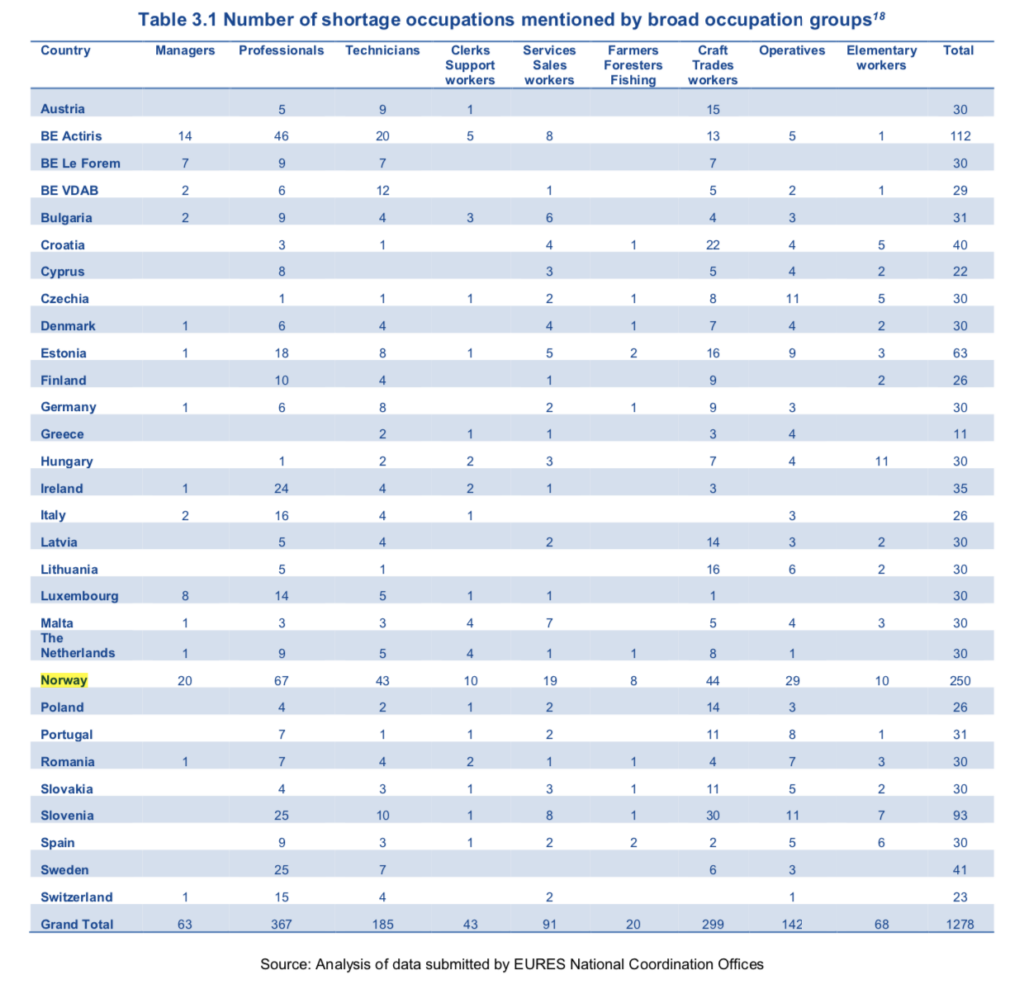
Europe’s worker gap is set to increase in the coming years, but the imbalances are already visible to the naked eye. Whether that’s broad occupation groups such as managers, professionals or craft work traders, a new report by the European Labour Authority (ELA) illustrates a huge imbalance in the total number of shortages in many European countries.
The ELA circulated a template to the NCOs of 29 countries and 3 regions seeking detailed information on shortage and surplus occupations. These countries and regions include the 27 Member States of the European Union (EU), plus Iceland, Norway, and Switzerland. In the case of Belgium, the NCOs of the three autonomous regions, namely the Flemish Region, the Brussels-capital region, and the Walloon Region, provided their own regional data.

‘Norway reports shortages in every occupation group’
Norway spearheaded the list with 250 identified shortage occupations. In fact, they were the only country to report a shortage in every single occupation group. Actiris (the Brussels Employment Office) identified 112 shortage occupations. In contrast, Greece only reported 11 shortage occupations — the lowest of any country on the list. There are of courses differences in wealth which may explain to some extent the large disparity between the number of shortage occupations reported by, for example, Greece and Norway. The GDP per capita in 2020, for example, was 15,177 Euros in Greece compared to 57,779 in Norway.
Software and healthcare sectors are problematic everywhere
The ELA aims to uncover possible matches to solve shortages in various EU countries, and Norway and Switzerland. “This report is an intrinsic component of the work programme of EURES (The European Job Mobility Portal). The report includes a focus on labour mobility and the extent to which it might contribute to improving the balance between labour shortages and surpluses within and across countries.”
“We may conclude that many of the most significant labour shortages are ubiquitous.”
The most prominent labour shortages, such as those involving healthcare or software skills, were not identified as a labour surplus anywhere in the EU or in Norway or Switzerland. “In this sense, we may conclude that many of the most significant labour shortages are ubiquitous. However, this finding does not preclude the possibility that matches between some labour shortages and surpluses may be possible in local, neighbouring countries or regions.”






